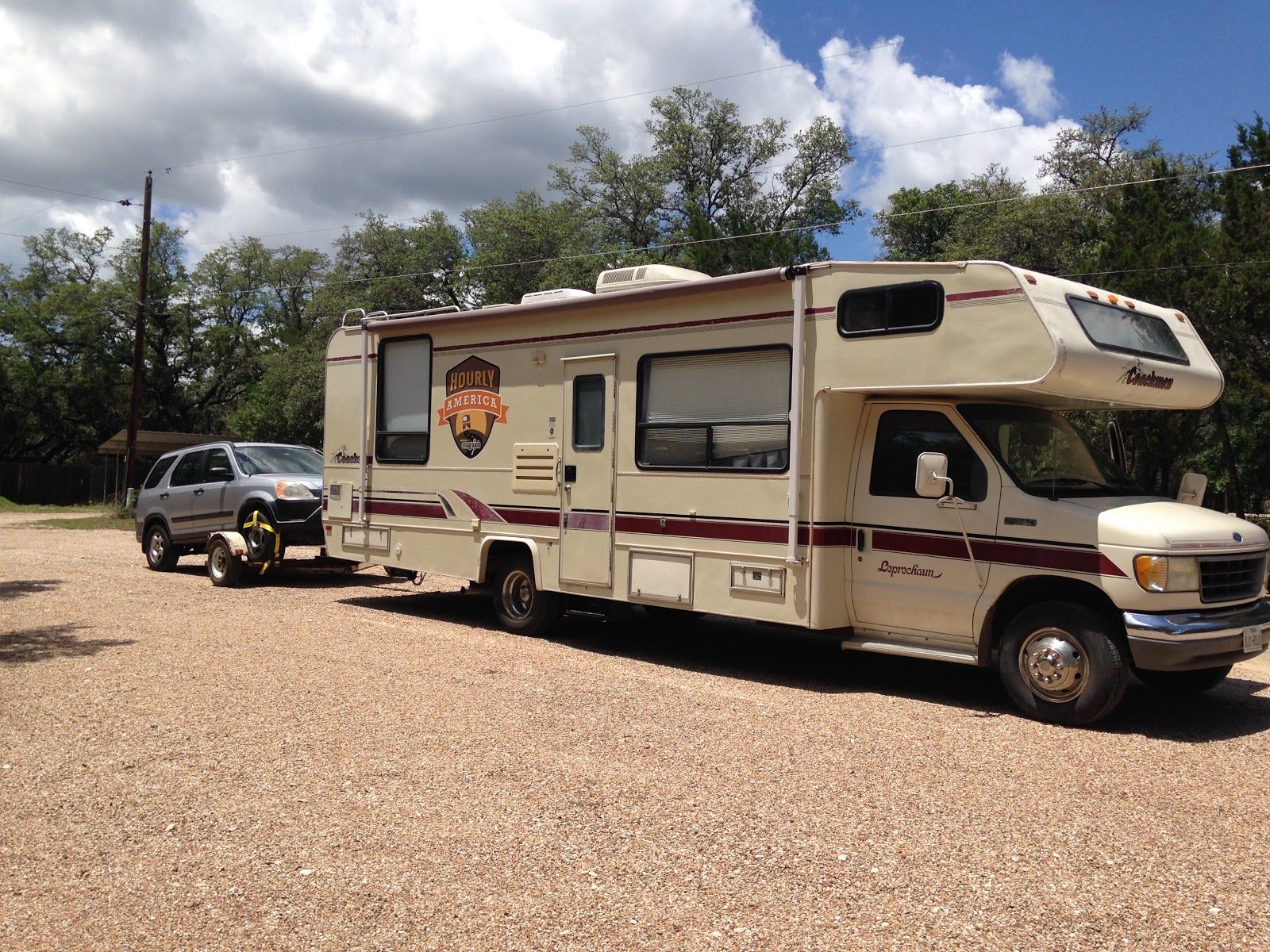
To Tow or Not to Tow
To Tow or Not to Tow: Pros & Cons of RV Tow Vehicles
Should you tow a vehicle behind your RV?
By: Heath & Alyssa Padgett
Before we hit the road in 2014, we had several freak out moments. However, our biggest anxiety point was whether or not we should tow a car behind our RV.
If we do tow, should we get a tow dolly or tow four wheels down? If we tow four wheels down, what kind of tow package should we get? We had so many questions.
Ultimately, the past two years has been an extensive testing ground for both scenarios -- towing and not towing.
Recently, we found what we believe is the best setup for our ideal form of travel for us, which is flat towing our Honda CR-V behind our Winnebago Brave. Before you make a decision on whether you should or shouldn't tow, I wanted to share a few of our towing experiences from the past two years.
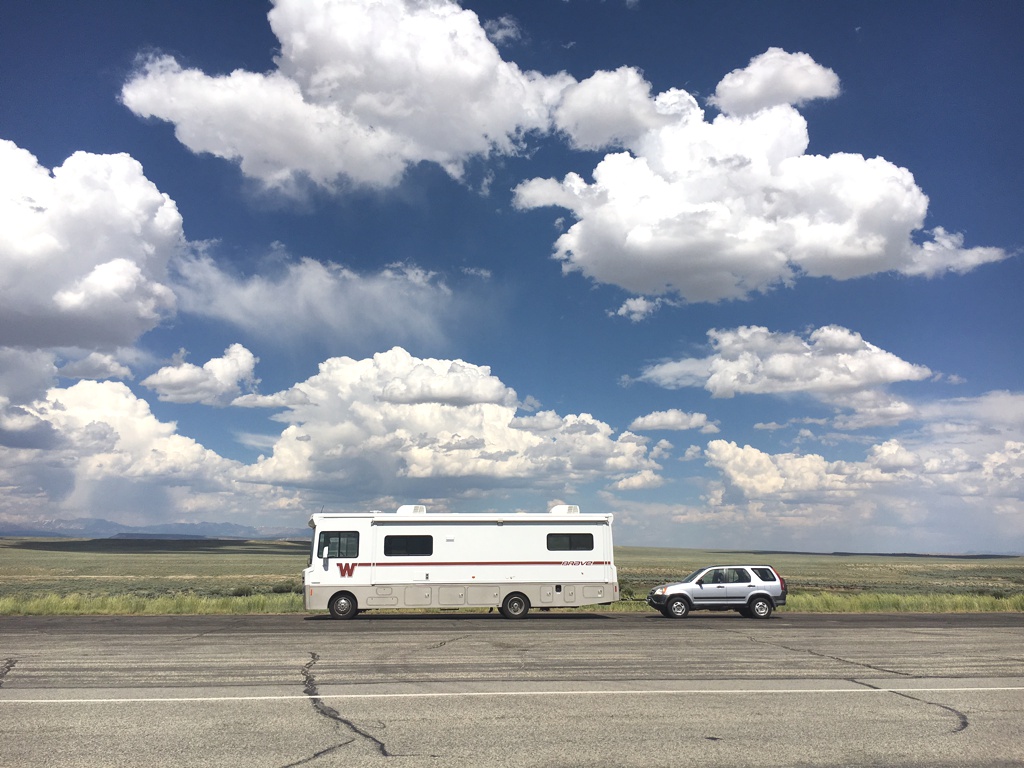 A scenic view of our current set-up.
A scenic view of our current set-up.
Driving Without a Tow Vehicle or "Toad"
Our first year RVing we drove our 1994 Class C motorhome to 48 states without having any kind of tow vehicle. This meant I drove our RV through cities like Austin, Los Angeles (multiple times), New York City, Cleveland, San Francisco, and many others.
What We Liked About NOT Having a Tow Car
- We saved a couple thousand dollars by not having to buy a tow package or tow dolly.
- Driving without a tow car was one less stress factor as a new RVer. There was already a learning curve while driving a large RV cross-country, to throw in a tow-vehicle on top of that would have been an added stress point for us.
- We saved a few minutes of time when leaving campgrounds and arriving, by not having to hook up a tow car.
The Downside of Not Towing a Car When RVing
- If we wanted to visit major cities, we had to drive our RV into downtown areas (like the photo above in Seattle).
- Trying to find a 29 foot parking spot was always stressful.
- Our RV was our only vehicle for errands. If we wanted to make a quick run to the grocery store, we had to pack everything up and move.
Conclusion: Driving a 29 foot RV through big cities is not fun.
Overall, the experience of driving our RV without a tow car was significantly more stressful. While it gave us one less thing to do when packing up our RV to leave a campsite, it also caused a lot of stress and limitations when we wanted to visit certain attractions that required a smaller vehicle.
For example, during our first trip to Glacier National Park we missed driving the Going to the Sun Road because we were too long. We also had to skip out visiting several major cities because we didn't want to deal with the stress of driving the RV.
Driving Our RV With a Tow Dolly
A tow dolly is where you tow with your front two wheels on top of a trailer. We used a tow dolly for only one day before we abandoned it in west Texas, but we tried again a year later.
What We Liked About the Tow Dolly
- We finally had a vehicle to explore local areas, without having to bring the RV along.
- The tow dolly was free, since we were borrowing it from a family member
What We Didn't Like About the Tow Dolly
- The straps on the tow dolly were a point of constant stress. They had to constantly be adjusted and would come loose during travel.
- The amount of time it took to hook up the car to the dolly.
- Driving the car onto the tow dolly trailer was a little unnerving. I never drove off the front, but it's something we've seen many people accidently do while using a tow dolly.
- I was constantly worried about the car falling off the tow dolly
- Having to find a place to store the tow dolly at each new campground.
Conclusion: Great having an extra vehicle, but more stress than it was worth.
Overall, the largest benefit to having the tow dolly was having access to our car. However, the stress caused by the difficulty of hooking up and unhooking the car from the dolly was not worth it. If it hadn't been completely free to use, I wouldn't personally recommend one.
Towing Flat Behind Our Brave
I recently installed a Blue Ox Base Plate and Blue Ox Tow Bar so that we could tow our 2002 Honda CR-V behind our Brave. Instead of having to deal with the the stress of driving our RV through big cities or worry about messing around with a tow dolly, we have the comfort of towing our CR-V with four wheels down.
The past month and a half we've covered several thousand miles with our new towing setup. I wish we would have done this from the very beginning. I was worried about the cost and difficulty of hooking up and unhooking the car from the RV. However, it takes just a few minutes to hook up our Honda CR-V behind our Brave.
To better understand how to hook up a tow car behind an RV, you can watch this video from Jason Wynn.
What We Like About Flat Towing
- It just takes a minute to hook up the car for towing.
- I can make much better turn radius while flat towing VS. the wider turns with a dolly.
- I'm not worried about our car falling off a tow dolly and smashing into someone.
- If we get stuck and need to reverse, it doesn't take 30 minutes to move the car off a dolly.
Conclusion: Towing flat behind the RV is the clear winner (for us).
Towing our Honda CR-V with four wheels down has turned out to be the best set up. It takes just a few minutes before each drive to set everything up. To see how to connect an RV to a tow car, you can watch this video from GoneWithTheWynns.
The manual in our CR-V gives us a simple set of directions and rules for towing. We aren't allowed to drive over 65 mph and before towing, we have to run the gears through a special sequence to lube the transmission. If we drive for more than eight hours in one day, which we rarely do, then we should do the sequence again.
So far, because of having our car alongside us we've been able to be a bit more adventurous than normal. Below are a few of the side adventures we've been able to go and do in the past month in our Honda CR-V.
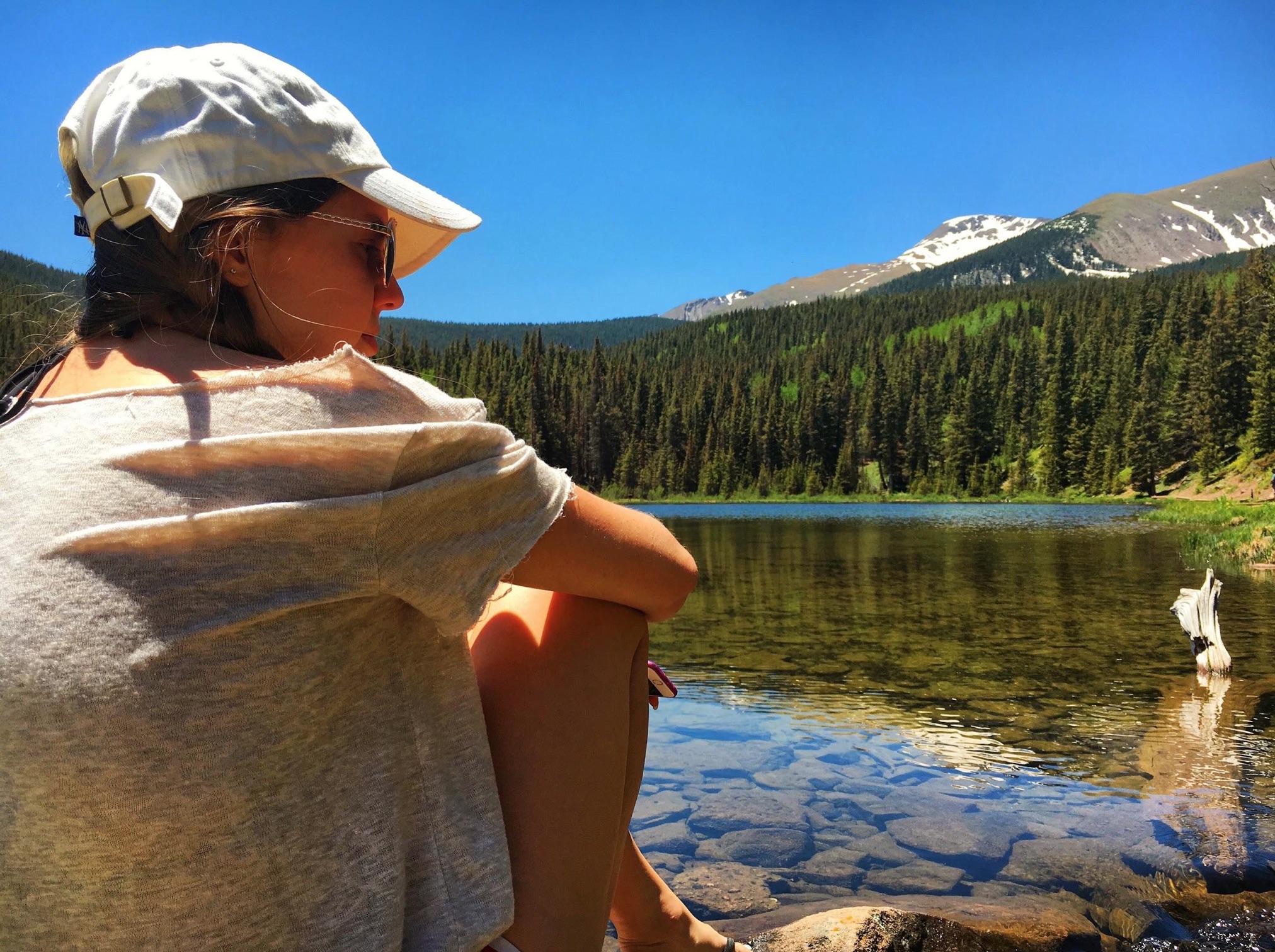 Driving up to Bear Lake near La Veta, CO is a winding dirt road with steep grades, we wouldn't have been able to make this trip in our 33 foot motorhome.
Driving up to Bear Lake near La Veta, CO is a winding dirt road with steep grades, we wouldn't have been able to make this trip in our 33 foot motorhome.
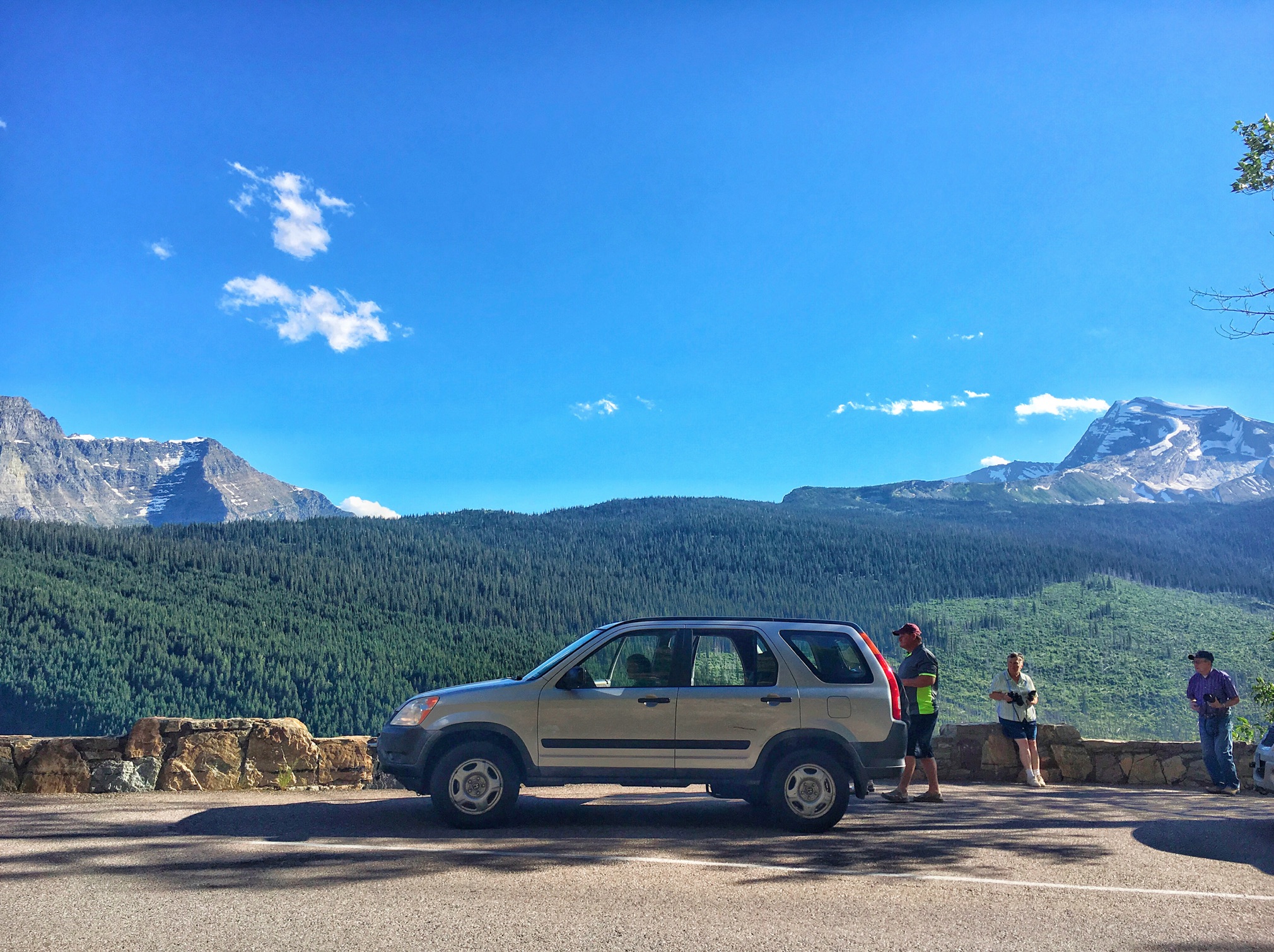 The Going-to-the-Sun road in Glacier National Park is one of the most beautiful drives in America. There is a 21 foot vehicle limit.
The Going-to-the-Sun road in Glacier National Park is one of the most beautiful drives in America. There is a 21 foot vehicle limit.
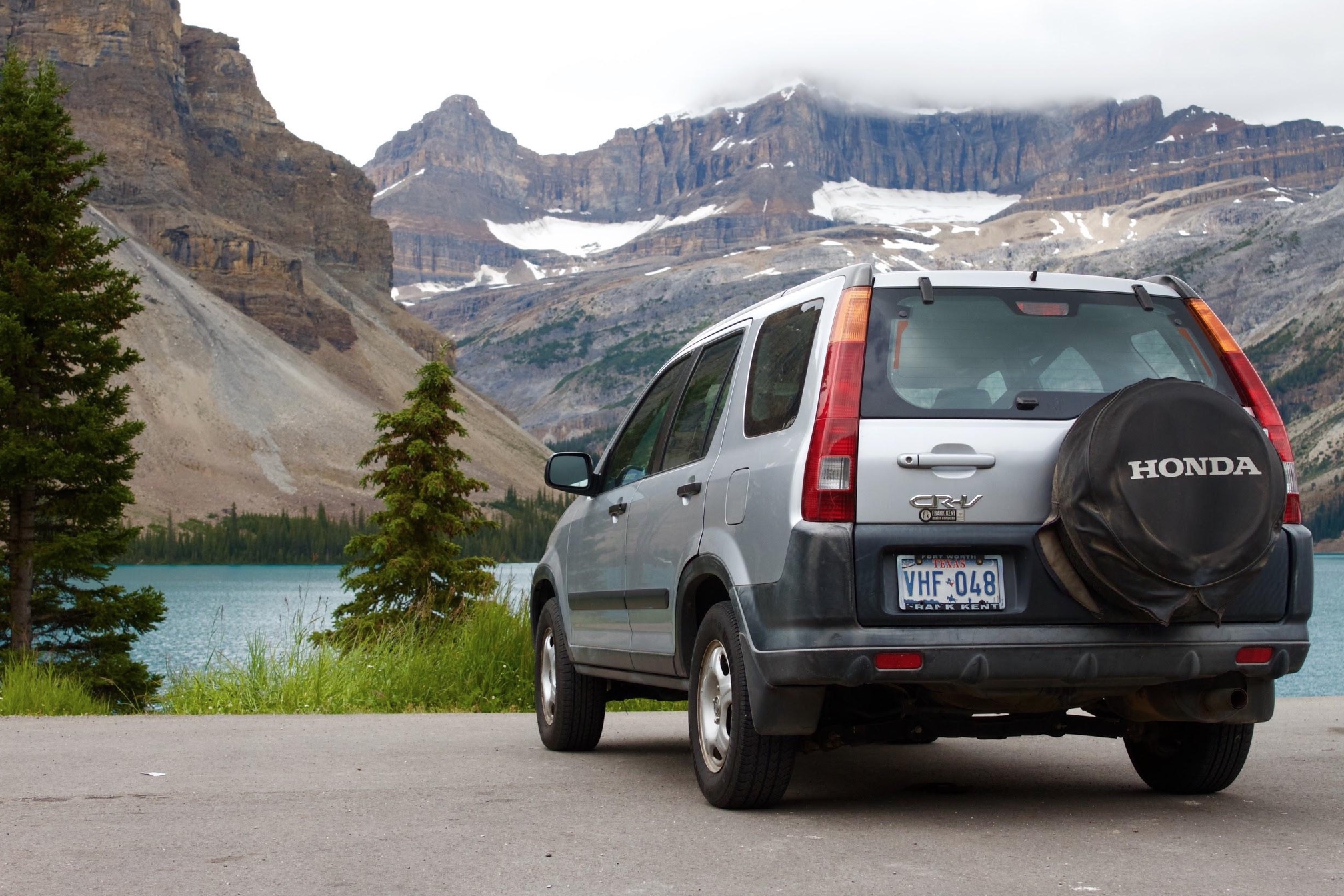 A result of a glacier-fed lake on the drive between Banff National Park and Jasper National Park. While our RV could have made this trip, it was a really cold and rainy day. It was much more ideal to simply drive our car.
A result of a glacier-fed lake on the drive between Banff National Park and Jasper National Park. While our RV could have made this trip, it was a really cold and rainy day. It was much more ideal to simply drive our car.
How We Picked a Tow Package for RVing
Ultimately, there are two main companies who manufacture tow bars, Blue Ox and Roadmaster. After looking through multiple online forums that compared both companies, they both seemed like fairly even products. Some people preferred Blue Ox, some people preferred Roadmaster. There wasn't a lot of differentiating factors with either tow bar.
We went with Blue OX because we were on a time crunch and we found a local dealer who could get us all the parts in time.
Note: Neither company sells direct. You'll have to find a local dealer on their website to buy from, unless you can find a seller on Amazon.
What We Had to Buy for Flat Towing
There were several different components we had to buy before setting up our Honda CR-V for flat towing.
Here's the list of big items we had to purchase:
A Blue Ox Alpha Tow Bar
This tow bar is rated to tow up to 6,500 lbs and inserts into the trailer hitch on our RV.
A Blue OX Base Plate (Made Specifically for a 2002 Honda CR-V)
We had to find a base plate that specifically fit the specs of Alyssa's 2002 Honda CR-V. I couldn't find a seller on Amazon, so I ordered through a local dealer for this part and paid around $320.
Most dealerships would charge several hundred dollars for this kind of installation, but luckily I had a friend who was willing to help guide me through the process. We spent three days drilling holes in the frame of our CR-V, removing our front bumper, watching Youtube videos for guidance and attaching the base plate.
Blue OX also sent a set of step by step directions for installing this base plate onto the front of our CR-V which proved incredibly helpful. If you have a few days and don't mind a bit of manual labor, I recommend doing the install on your own.
Here is a helpful video demonstration from etrailer.com that shows you how to install a baseplate on a Honda CR-V.
A Blue OX light kit.
I'm sure any light kit would work. Just to make it easy, I ordered the Blue OX light kit to make sure that everything would work properly and it was around $45. I followed this Youtube video for help on the light installation.
A Brake Buddy
Many states have towing laws that regulate whether or not you need some type of auxiliary braking system. An auxiliary braking system is designed to brake your vehicle for you as you tow it. Since we were driving our RV up through Canada, you are required by law to have one.
You can find a complete state-by-state list of those regulations. Brake Buddy, the most popular auxiliary braking system will run you around $1,000.
After a bit of searching, I found a brand new Brake Buddy on Ebay for just $600.
Questions?
Ultimately, the decision to tow is up to each RVer. How fast will you be traveling? Are you going to more city locations and how long is your RV? There is no one size fits all solution. To learn more about towing, check out this post from Don Cohen.
If you have any questions about towing, drop them into the comments and I'll try to be as helpful as possible!
Comments
Comments on this post are moderated, so they will not appear instantly. All relevant questions and helpful notes are welcome! If you have a service inquiry or question related to your RV, please reach out to the customer care team directly using the phone numbers or contact form on this page .

